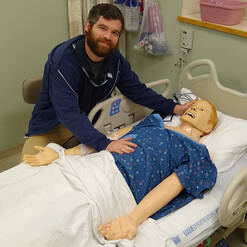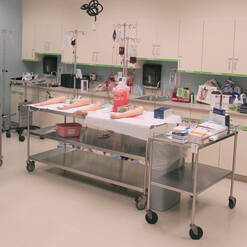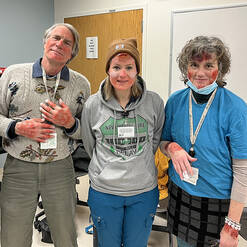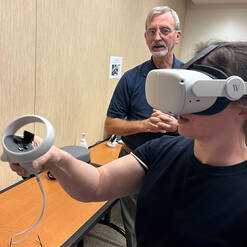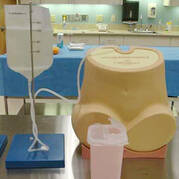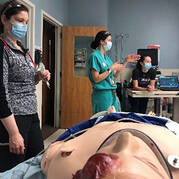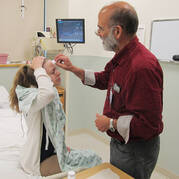SBER’s curriculum development team will work with you to design and develop healthcare simulation-based education programs to address your learner’s needs across a wide range of medical scenarios and skills, from respiratory equipment usage to critical pediatric and adult care including specialties like obstetrics, emphasizing clinical assessment, communication, and teamwork.
Trainings use a variety of modalities including:
- Manikins
- Task/Skills Trainers
- Standardized Patients
- Screen and Headset-based Extended Reality (XR)
By participating in simulation-based education, learners can demonstrate proficiency in managing critical situations, providing timely interventions, and maintaining patient safety, while adhering to protocols in clinical encounters.
Examples
Skills training – pedi lumbar puncture
Skills training for pediatric residents with learning objectives that focus on demonstration of the procedural steps and communicating to the patient and parent about what is being done, to a standard set by the American Academy of Pediatrics. This is completed using the pediatric lumbar puncture trainer and the supplies that would be used in the clinical environment.
Critical care scenario - manikin
Manikin-based scenario training for critical care registered nurses. Learning objectives include completing an assessment, intervention prioritization, and demonstration of teamwork and communication strategies to deliver safe and efficient care of a patient with acute coronary syndrome. This is completed using a manikin with vital signs and lung/heart sounds as well as supplies that would be used in the real clinical environment including IV’s, arterial line, and simulated medication administration and documentation in the eDH training environment. The training begins with a facilitator-led pre-briefing and concludes with a debriefing designed to maintain an effective and psychologically safe learner environment.
Case training – standardized patients
Case training utilizes a standardized/simulated patient (SP) to simulate communication between provider and patient. Trainings of this kind can be done in person or remotely via telehealth equipment or virtual meeting platform. In one current example, the psychiatry resident learner group conducts a telehealth assessment of a patient with active depression and suicidal ideation. Using a script created by the Subject Matter Expert (SME) and SBER educators, the SP provides standardized answers to learner questions as they move through their assessment. The facilitator can give the SP tips on how to change their emotional responses or affect based on how the learner is interacting with them. The training begins with a facilitator-led pre-briefing and concludes with a debriefing designed to maintain an effective and psychologically safe learner environment. In this case, the SP will also attend the debriefing to provide feedback on how the learners made them feel during the training.
